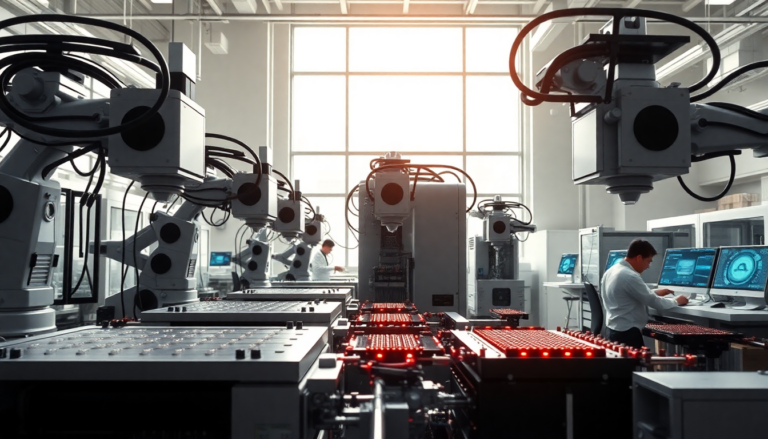Argomenti trattati
The semiconductor industry is on the verge of a major transformation, and Japan’s Rapidus is set to play a pivotal role in this exciting evolution. As the demand for advanced semiconductors skyrockets, Rapidus is gearing up to unveil its groundbreaking 2nm-class process technology by 2027. But what does this really mean for the industry? This innovation isn’t just about enhancing production capabilities; it also incorporates cutting-edge packaging techniques designed to cut down production cycles. Yet, to truly stand toe-to-toe with established giants like TSMC, Rapidus will need to harness unique technologies that distinguish it from the pack.
Technological Advancements and Market Strategy
At the heart of Rapidus’ strategy is a commitment to introducing features that set it apart from its competitors. By integrating fully automated packaging right alongside wafer fabrication, Rapidus aims to streamline production timelines. Could this innovative approach give them a competitive edge as they move toward high-volume semiconductor manufacturing in 2027? While the initial phase of their facility will concentrate solely on wafer pilot manufacturing, the rollout of packaging services is on the horizon.
As part of its technological arsenal, Rapidus is incorporating gate-all-around transistors in its 2nm process, which are expected to significantly boost performance and efficiency. The company has plans to deliver its first sample wafers by July, providing early clients with essential design tools for prototype development. This proactive strategy not only highlights Rapidus’ commitment to innovation but also showcases its keen understanding of market demands.
Infrastructure and Research Initiatives
To support its ambitious agenda, Rapidus has set up a state-of-the-art facility in Chitose, Hokkaido, outfitted with EUV and DUV lithography machines from ASML. These advanced machines are crucial for advancing semiconductor manufacturing and are expected to facilitate pilot runs, although the first light-on-wafer milestone has yet to be officially announced. The successful installation of these systems represents a significant leap for Rapidus as it prepares for production.
Moreover, the establishment of the Rapidus Chiplet Solutions research center at Seiko Epson’s Chitose location underscores the company’s dedication to innovation. This center is set to focus on scaling up post-fabrication work, which includes developing redistribution layers and 3D packaging processes. Such initiatives are vital for improving manufacturing efficiency and ensuring that Rapidus can meet the surging demand for advanced semiconductor solutions.
Challenges and Future Projections
However, despite its promising start, Rapidus is not without its challenges. Market analysts, including former Intel CEO Pat Gelsinger, stress the importance of developing distinctive technologies that elevate Rapidus’ offerings beyond just production efficiency. Without these critical advancements, competing with established players like TSMC, Samsung, and Intel could be a steep hill to climb.
As the semiconductor market continues to evolve, Rapidus must stay alert and adaptable to technological trends and competitive strategies. The upcoming years will be crucial for the company as it strives to carve out its niche in an industry marked by rapid innovation and fierce competition. Ultimately, the success of Rapidus will hinge not only on its technological prowess but also on its ability to effectively respond to market dynamics and the ever-changing needs of its customers.

